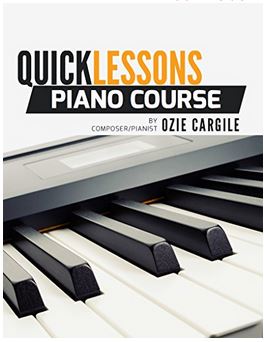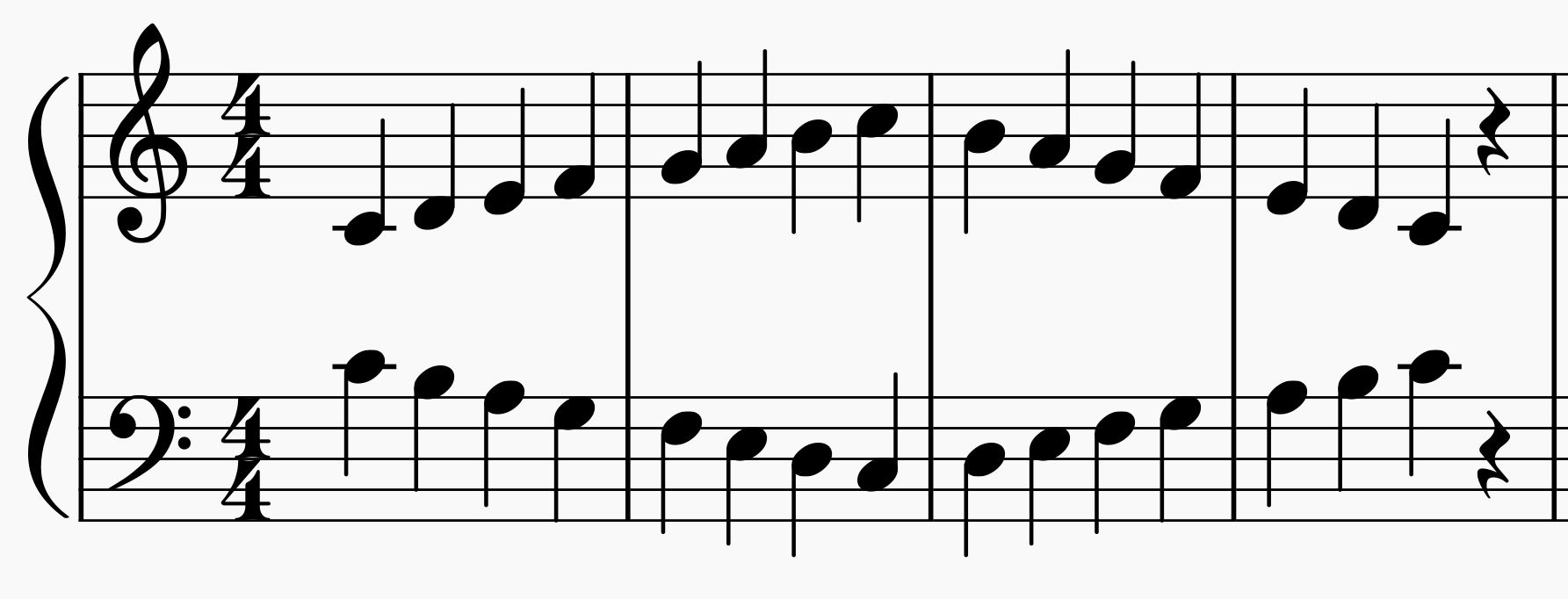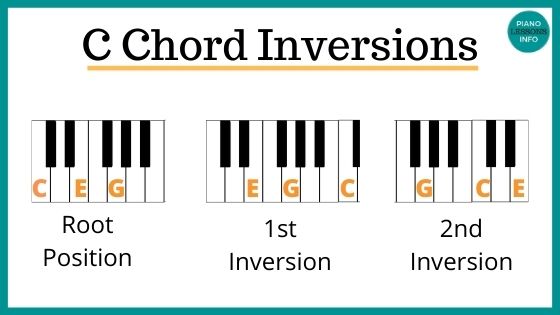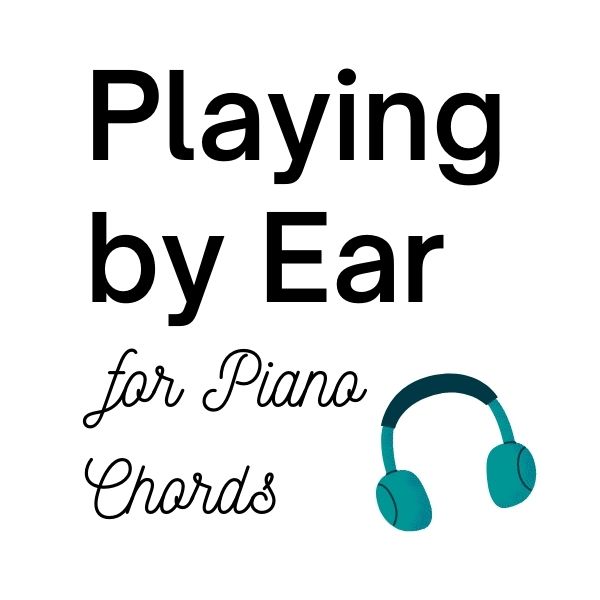5 Piano Hand Coordination Exercises (To Get Your Hands Working Together)
Here are some beginner piano hand coordination exercises / tutorial to improve the coordination between your left and right hands.
If you've been struggling with this, you're not the only one! I get a lot of requests for help in this area. Actually this is an ongoing issue that you work on from beginner to advanced (where you have to hit the notes at exactly the same time).
Today, we're focusing on ways to start getting your hands to play together and using some basic piano chords to do that.
Piano Hand Coordination Tutorial:
Steps To Take For Hand Coordination
When first starting to get your two hands to pair up and play together, you want to start simply. This means not even playing together but just have your hands operating when they should.
(And for all of the steps below, if one is too simple for where you're at, move onto the next one.)
Here are a series of steps you can take to learn to coordinate your hands.
Step 1: Alternating Hands
We're going to use the chords C (notes CEG), G (notes GBD, Am (notes ACE) and F (notes FAC) in this tutorial - just to make it pretty accessible to everyone.
If you haven't learned much about piano chords yet, this will give you a good introduction. (You can also read What Are Piano Chords for more info.)
Onto the first step.
1. We're going to play the C chord in both hands but at separate times.
For this exercise, play just the note C in your left hand (LH), and the C chord (CEG) in your right hand (RH).
Now play: LH RH LH RH - alternating hands.
Try to keep in time. You can use a metronome to help you.
Now try: LH LH RH RH.
Now try: LH RH RH RH
Then: RH LH LH LH
Step 2: Putting Hands Together Simply
In the second piano hand coordination exercise, you're going to start putting your hands together, but simply. What we want to do here is play together on the first of the 4 beats.
Left hand (LH) will play the note C and right hand (RH) will play the C chords (CEG).
Play: Together RH RH RH (and repeat)
Try and hold your LH down the for the whole 4 beats (for the whole time your right hand is playing). If this is challenging for you, make it your first goal as this is something important to master.
Now try this exercise as a chord progression. We're going to use the chords C (CEG), G (GBD), Am (ACE) and F (FAC).
For each chord, play the root note of the chord in your left hand while playing the chord in the right hand. (For example, Am would be A in LH and ACE in RH.)
Now try playing the left hand on the first and third beats.
Play: Together RH Together RH
If you want to take this further, try playing your left hand with a variety of rhythms. On all 4 beats, on beats 2 and 4, at times you RH doesn't play, you can experiment here.
Step 3: Broken Chords
We'll now switch things up and get away from the solid chords and try some piano hand coordination exercises with broken chords.
Broken chords play one note at a time instead of all together (solid).
What we're going to do is play a chord starting in the left hand, one note at a time and then continue in the right hand, one note at a time.
Play: (LH) C E G (RH) C E G
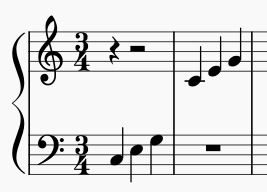
Now try playing these notes at the same time in both hands.
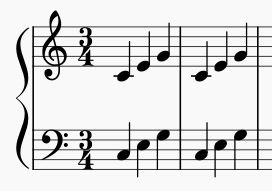
The key here is to:
- get your hands playing at the same time
- work on getting your hands to hit the keys at the exact same time
Listen carefully to when your fingers are hitting the notes and try to get it as close as you can.
Now use the chord progression we've been using and try playing the broken chords both one at a time and then together.
Chord progression: C G am F
If you need to stop and find your place between chords, try to keep the rhythm in your head and stay in time.
Step 4: Broken Then Solid
Another good hand coordination exercise is to play a chord broken in one hand and then follow that by playing it solid (all notes at the same time) in both hands.
Play: (LH) C E G (Together) Solid C chord
Play: (RH) C E G (Together) Solid C chord
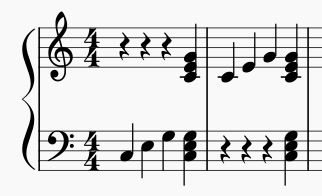
Step 5: Chord in Right Hand
The final exercise (for now anyway) is to play the chord in the right hand and play the root note in your left hand on an off beat. (An off beat is not your standard 1 and 3 counts when you're counting out rhythm.)
You basically want to try and fit your left hand in a spot that doesn't feel that routine or comfortable. Start trying to fit it in where you can.
It's okay if it doesn't sound right or hit at the right time, that's the point of this exercise - to discover an area to work on and then work on it.
A Note About The Pedal:
If you haven't used the pedal much, I'd say leave it out for these piano hand coordination exercises. At least for now. Adding it in means you're trying to coordinate 3 limbs instead of 2!
If you are used to using the pedal or it is something you'd really like to work on, give it a try. It'll make things sound nice!
Want To Keep Working On Hand Coordination?
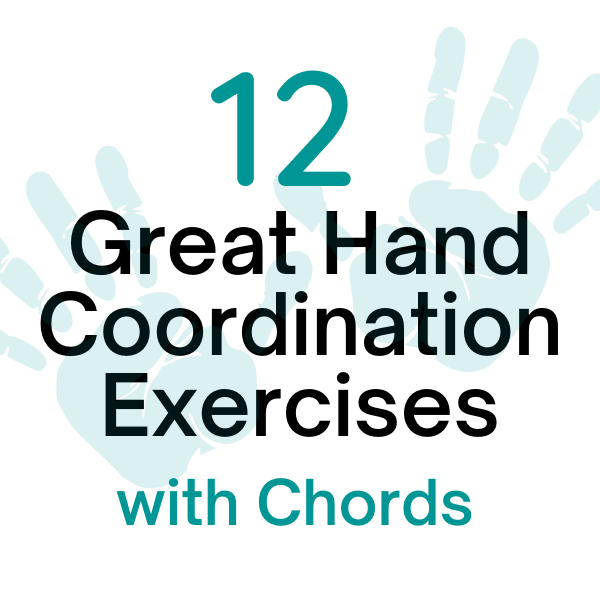
You may or may not know that I have a membership program running that has lots of little mini courses in it. One of them is all about hand coordination and since I teach a lot about chords, I've added chords into the exercises.
The 12 Great Hand Coordination Exercises course has 7 lessons with hand coordination exercises that you can do to continue to improve.
These range from pretty simple exercises, starting from where we've left off here, to harder exercises.
Hand coordination exercise PDFs are part of the course and are written out in sheet music as well as words (written explanations) for those who aren't so sure about reading music.
The lessons include:
- coordinating still and moving notes and adding in various rhythms to challenge you
- playing broken chords and coordinating other notes and chords with them
- adding in big 4 note chords to give you more options for what to play while teaching your hands to do different things
- hand coordination exercises using more uncommon chords so that they don't trip you up when you come across them
- exercises to help you coordinate still and moving notes so that playing melody with chords becomes more seamless
There are 7 lessons in total - the last one being a coordination improv challenge - and you can do these exercises as a warm up with your practice or really concentrate on them for a little while.
Want to do the course or learn more about the Piano Chords Club (where this course lives)?
Free Download:
Ultimate Chord Cheat Sheet
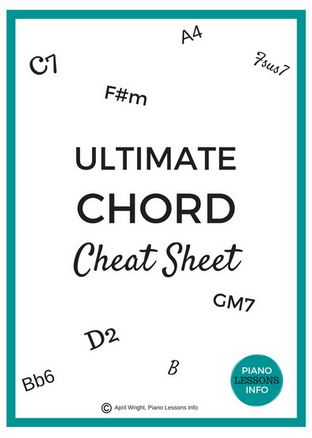
Subscribe below and get free access to the (printable) Ultimate Chord Cheat Sheet.
Recent Articles
-
Piano Notes Chart
Nov 20, 23 10:21 PM
Find a piano notes chart for treble clef and bass clef notes as well as the different types of notes. -
D Chord on Piano + Diagram, How To & Theory
Oct 24, 23 12:20 AM
Learn how to play the D chord on piano with diagram, fingering, D/A, D/F# and a theory explainer. -
Diminished Piano Chords: Chart & How to Make Them
Oct 09, 23 09:23 PM
Learn the different diminished piano chords and how to make them. Here you'll find both a diminished chord chart and an explanation.
Free Download:
Ultimate Chord Cheat Sheet

Subscribe below and get free access to the (printable) Ultimate Chord Cheat Sheet.


